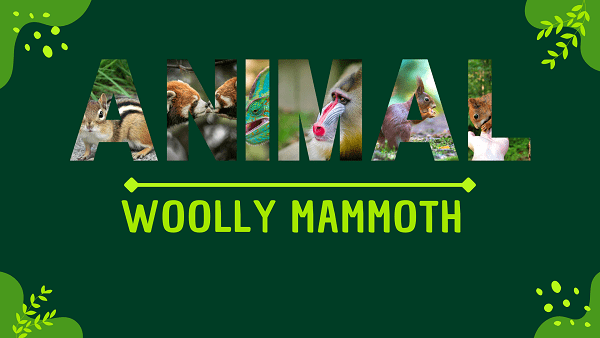Woolly Mammoth | Facts, Diet, Habitat & Pictures
Home » Animals » Woolly Mammoth | Facts, Diet, Habitat & Pictures
Woolly Mammoth Overview
Appearance
The woolly mammoth was a prehistoric elephant species that roamed during the Pleistocene epoch. It possessed a massive, robust body covered in shaggy, long brown fur, which helped it withstand cold temperatures. Woolly mammoths had a prominent hump of fat on their backs and long, curved tusks that could reach up to 15 feet (4.5 meters) in length.
Their trunk was elongated and flexible, much like that of modern elephants. These magnificent creatures stood around 9 to 11 feet (2.7 to 3.4 meters) tall at the shoulder, making them well-adapted to the icy landscapes of the last Ice Age.
Origins And Evolution
The woolly mammoth, scientifically known as Mammuthus primigenius, originated in the late Pliocene epoch, approximately 2.5 million years ago. It evolved from earlier species of mammoths in North America. These early ancestors adapted to the changing climate and developed features like long, shaggy hair and curved tusks.
During the Pleistocene epoch, woolly mammoths spread across northern Eurasia and North America, thriving in cold, grassy environments. Their evolution included adaptations for cold weather, such as a hump of fat for energy storage and a specialized dentition for grazing on grasses.
Woolly mammoths coexisted with early humans, and their remains have been found in association with human tools and artwork. Sadly, they went extinct around 10,000 years ago, likely due to a combination of climate change and overhunting by humans. Despite their extinction, woolly mammoths remain iconic symbols of the Pleistocene era.
Behavior and Lifestyle
Woolly mammoths were herbivorous creatures that lived in small family groups. They were primarily grazers, feeding on grasses and other vegetation. Their lifestyle was adapted to the cold, tundra-like environments of the Pleistocene, where they migrated in search of food.
These social animals likely exhibited behaviors such as communication through vocalizations, scent marking, and cooperation within their family units. They also had a strong maternal care system, with mothers protecting and nurturing their calves within the close-knit family groups.
Woolly Mammoth Scientific Classification
- Kingdom: Animalia
- Phylum: Chordata
- Class: Mammalia
- Order: Proboscidea
- Family: Elephantidae
- Genus: Mammuthus
- Species: Mammuthus primigenius
Woolly Mammoth Locations
- Northern Eurasia
- North America
- Siberia
- Alaska
- Canada
- Europe
- Asia
- Beringia
- Various tundra and grassland habitats
Fast Facts
- Name: Woolly Giant
- Scientific Name: Mammuthus primigenius
- Habitat: Ice Age Tundra
- Diet: Herbivorous Grazer
- Physical Features: Thick Fur
- Nocturnal: Diurnal Forager
- Solitary: Herd Member
- Unique Order: Proboscidea Family
- Lifespan: About 60 Years
- Conservation Status: Extinct Species
- Fun Facts: Curved Tusks
Physical Characteristics
- Color: Brown Fur
- Skin Type: Shaggy Hide
- Top Speed: Slow Walker
- Lifespan: About 60 Years
- Weight: Massive Build
- Length: Large Size
- Age of Sexual Maturity: Breeding Age
- Age of Weaning: Maternal Care
Woolly Mammoth FAQs
What is a woolly mammoth?
The woolly mammoth is an extinct species of elephant that lived during the Pleistocene epoch and is known for its distinctive shaggy coat and long-curved tusks.
Where did woolly mammoths live?
Woolly mammoths were primarily found in cold regions of Eurasia and North America, including Siberia, Alaska, and parts of Europe.
What did woolly mammoths eat?
Woolly mammoths were herbivores and primarily grazed on grasses, shrubs, and other vegetation available in their tundra and grassland habitats.
How big were woolly mammoths?
They were large creatures, standing about 9 to 11 feet tall at the shoulder and weighing around 4 to 6 tons.
Why did woolly mammoths have long tusks?
Woolly mammoths used their tusks for various purposes, including digging for food under snow, defending against predators, and possibly for mating displays.
When did woolly mammoths go extinct?
Woolly mammoths went extinct around 10,000 years ago at the end of the Pleistocene epoch, likely due to a combination of climate change and overhunting by early humans.


